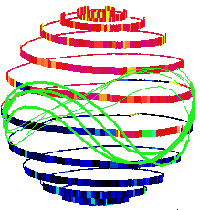This figure was made by Geza Erdos of the KFKI in Budapest. It shows the polarity of the Sun's magnetic field as Ulysses traveled from the south pole to the north pole.
Click on image for full size
Imperial College
The Sun's Magnetic Field Polarity
Ulysses is a spacecraft that is traveling around the Sun. Ulysses is orbiting around the top and bottom of the Sun. No other spacecraft has ever done this...so Ulysses gets to measure things no other spacecraft ever has!
One thing Ulysses has been measuring is the Sun's magnetic field. It's like the Sun has a big magnet inside of it and Ulysses is measuring how strong that magnet is. This picture shows which direction the magnetic field of the Sun is pointing. Where it's blue, the magnetic field points in toward the Sun and where it's red it's pointed away.
The magnetic field of the Sun is very complicated, so don't worry if you don't understand everything. Even scientists are still trying to figure things out!
You might also be interested in:
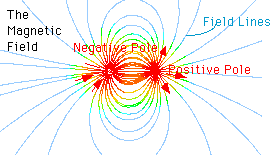
The force of magnetism causes material to point along the direction the magnetic force points. Here's another picture of how this works. This picture shows where the magnetic poles of the Earth are to
...more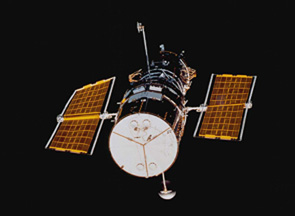
The Hubble Space Telescope (HST) is really neat! It was first launched in 1990, but scientists started building it in the 1970's! We have found all kinds of objects like stars, nebulae and galaxies. The
...more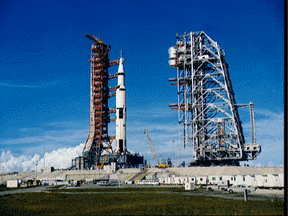
Apollo 11 was the first mission that landed a person on the moon. On July 16, 1969, the U. S. rocket Saturn 5 was launched carrying the lunar landing module Eagle. The Eagle was released and it reached
...more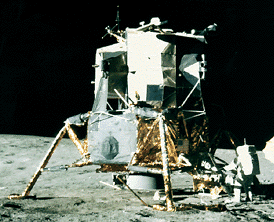
Apollo 12 was launched on Nov. 14, 1969 and arrived at the Moon three days later. Astronauts Charles Conrad and Alan Bean descended to its surface, while Richard Gordon remained in lunar orbit aboard the
...more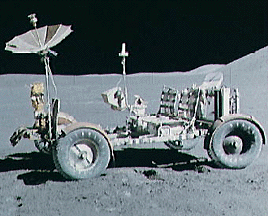
Apollo 15 marked the start of a new series of missions from the Apollo space program, each capable of exploring more lunar terrain than ever before. Launched on July 26, 1971, Apollo 15 reached the Moon
...more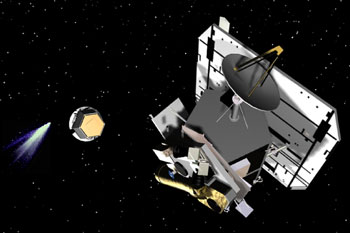
NASA chose Deep Impact to be part of a special series called the Discovery Program. This program is for cheap, scientific projects. In May 2001, NASA said it was ok to start with mission development for
...more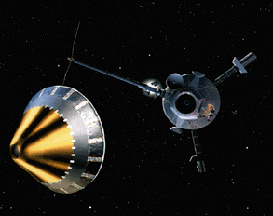
Galileo was a spacecraft that orbited Jupiter for eight years. It made many discoveries about Jupiter and its moons. Galileo was launched in 1989, and reached Jupiter in 1995. The spacecraft had two parts.
...more


